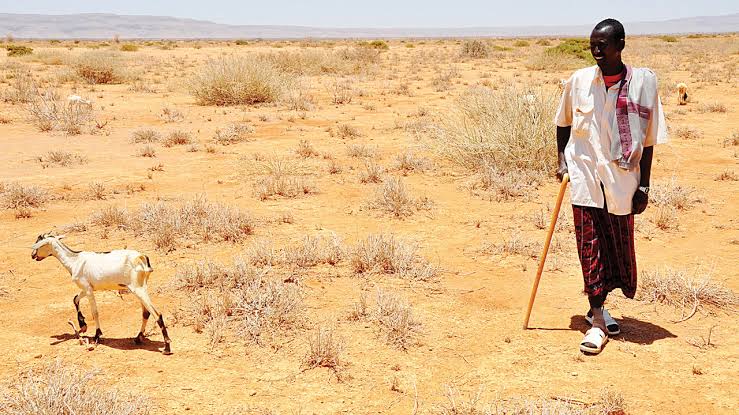How to combat desertification, drought in Nigeria

Every year, the United Nations marks “World Day to Combat Desertification and Drought” on June 17.
This year’s edition was recently celebrated.
In a statement released on June 16, UN called for rights-based approach to combat desertification, land degradation and drought.
The body stated that the world must do more to combat desertification and degradation as it has enormous human rights consequences being that it affects the right to water, the right to food, cultural rights, the rights of the child and the right to a clean, healthy and sustainable environment.
The UN stated that “the world’s drylands, which are home to three billion people in 169 States and cover almost half of the Earth’s land, are under severe threat from drought, land degradation and desertification.
Noting that desertification is happening at approximately 30 times the historical rate due to intensive agricultural practices, deforestation and poor water and land management. According to the UN, the world lost at least 100 million hectares of healthy and productive land annually between 2015 and 2019. It also predicted a 95 percent degradation of the planet’s land area by 2050 if preventive and remedial steps are not taken. It defined rights-based approach to be one that “emphasises States’ obligation to address the underlying causes of desertification and land degradation, which are the same actions driving the other elements of the planetary environmental crisis.”
The reality of drought is not far-fetched in Nigeria. In Ugbegun in Esan Central local government area of Edo state water especially in dry seasons is likened to a treasure. It is not unfamiliar to see the numerous reservoirs dug across the town’s land areas, as every family has to have at least one of these concrete and cement reservoirs that trap water during the rainy season to survive water scarcity when the dry/harmattan season comes. Boreholes are a luxury as the town just has a few boreholes which are usually crowded up in dry seasons.
This situation is not only present in Ugbegun, as other villages and towns in other parts of the country share this same fate. The big question is what happens when there is no rainfall? What happens when the rains come late? What happens when there is drought?
In the same vein, parts of the country, especially the Northern region is plagued with desertification as reports show that 50 and 75% of states of Bauchi, Borno, Gombe, Jigawa, Kano, Katsina, Kebbi, Sokoto, Yobe and Zamfara are being affected by varying degrees of desertification, this is evident with the movement of livestock down South from the North leading to herders-farmers clash due to land tussle.
The twin phenomenon of drought and desertification go hand in hand and have a devastating effect on the environment.
Drought according to World Health Organisation is a prolonged dry period in the natural climate cycle that can occur anywhere in the world. It is a slow-onset disaster characterized by the lack of precipitation, resulting in a water shortage. Rising temperatures which is as a result of climate change causes dry regions to become drier as water evaporates easily.
About 55 million people globally are said to be affected by drought yearly. Also, water scarcity affects 40% of the world’s population with 700 million people being at risk of drought-related displacement. Studies have shown that increasing climate variability in Nigeria would potentially increase drought frequency and drought affected areas.
The impact of drought is social, environmental and economic; it attacks the livelihood of agriculturists, thereby causing food shortage, it has serious health impact, and a lot of other consequences.
Desertification on the other hand is the depletion of terrestrial ecosystems under the influence of harsh weather conditions and human activities. It is also known as land degradation, especially in arid, semi-arid and sub-humid ecosystems. According to the World Meteorological Organization (WMO) and U.N.E.S.C.O, about 15% of Nigeria’s land is prone to desertification.
Desertification also affects 70 million Nigerians and 75 million hectares of land, as it has the largest desertification rate in the world, approximately 3.5 percent, and therefore loses between 350,000 and 400,000 hectares of land yearly. Globally, 1.4 billion people; 70 percent being the poor population are affected by desertification.
Just like its twin, it has a serious environmental and economic impact. Overgrazing, urbanization, climate change, overuse of groundwater, deforestation, natural disasters, and tillage practices in agriculture that make soils more vulnerable to wind are causal factors of desertification.
States like Lagos have in the past made attempts to tackle deforestation issues with the “cut one plant five” policy but this has not been effective, as the Nigerian economy becomes more and more industrialised due to its “developing” status. Recently, Dangote refinery; Africa’s biggest oil refinery was launched, a great industrial feat no doubt, but would cause an increase in global carbon emissions a contributing factor to climate change. Climate variability in turn leads to drought and drought drags along desertification and the cycle continues.
To ensure that drought and desertification does not strike like a thief at night, better water and land management system should be in place, policies on climate change should be established, adopted and properly implemented, alternative energy sources should be invested in to reduce carbon emissions, Nigerians are also to plant 350 million trees a year, in all the approaches taken must be ‘rights-based’ as stipulated by the UN.




